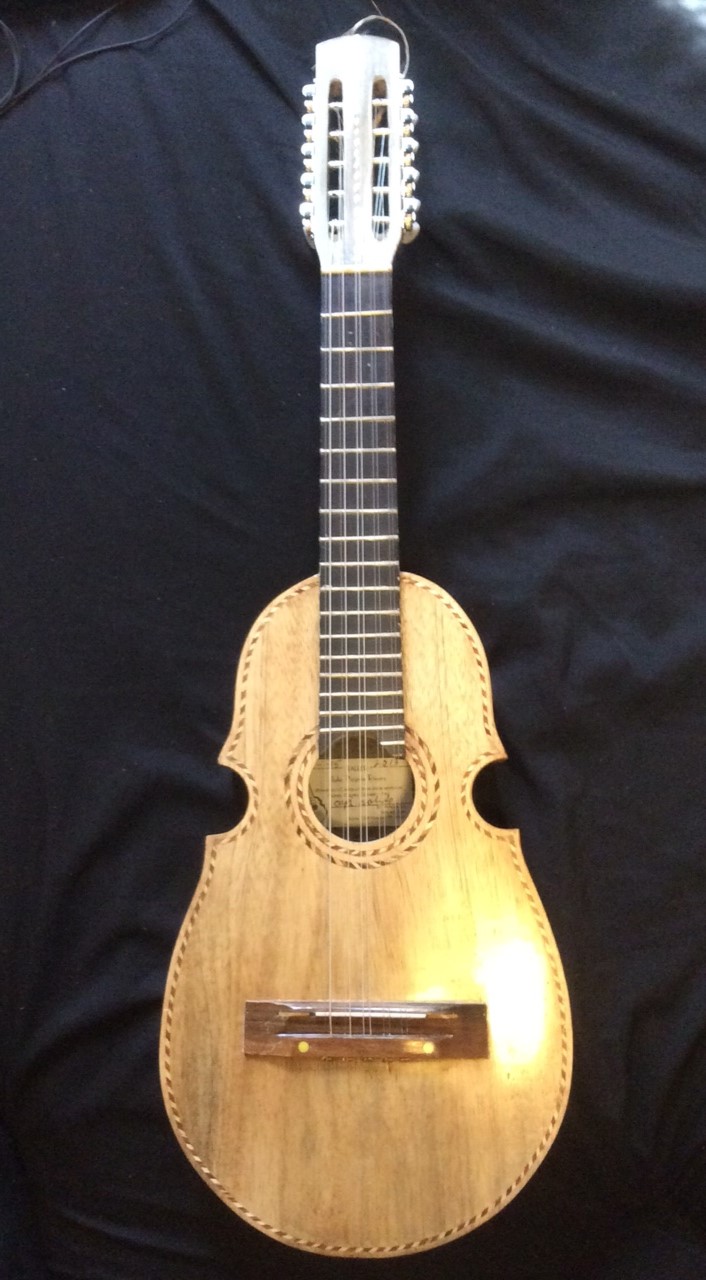Asking for advice in replacing the bridge on this instrument. (It’s not a mandolin but it has double courses…)
I purchased for $25 a hurtin’ Puerto-Rican style cuatro this week (ten strings; all fourths, BEADG; low B and E in octaves, high pairs in unison). It was playable, but the bridge was pulling up and was held in place by screws. The bridge pulled up more as I brought it up to proper tune and my expectation was that the bridge would blow out if got all the strings on it and kept it at proper pitch. I’m trying to repair this as cheaply as possible. I suspect this was probably a $175 Chinese instrument in the first place.
I took the screws out, heated up the bridge with a hair dryer, and managed to get the bridge off without any damage to the top.
The instrument top under the bridge was finished, which probably accounts for the failure of the glue to hold.
I had my daughter stick her hand in the soundhole (mine won’t fit) and under the bridge area and she found two small blocks under the screw holes. Two of the three holes on each side led to these blocks, the third hole on each side “missed.” (only two of the three screws had any “bite” on removal, consistent with this observation.)
The bridge is a somewhat crude classical guitar bridge that is fairly warped, in various directions (i.e., there’s not one consistent bend or one arch; the rear center is arched, the front center is flat, the ends pull up a bit from the screwholes .
Looking at various internet photos of cuatros, there does not seem to be a “standard” bridge type but classical-style guitar bridges are not unusual.
I sanded off the excess glue and finish from the bridge footprint on the cuatro top and am ready to replace the bridge.
Questions:
Is it worth trying to straighten out the bridge, and if so, how? I can get a new bridge for about $20, I think (if a new bridge is in line, any recommendations would be appreciated). I’d need to drill some more holes in the bridge to accommodate the ten strings but I don’t see that being a big issue.
Is the Tite-Bond ready-to-use hide glue a good choice for glue?
What’s a good technique for getting the existing saddle out of the bridge?
Should a properly glued bridge be sufficient to hold the tension without the screws?
I don’t have any deep-throat C clamps and will have to purchase them to install the bridge. To keep my costs down I am contemplating buying one clamp for the center of the bridge, and using the screws to hold down the ends of the bridge. Is that likely to suffice?
Thanks for answers to these questions or any other advice!







 Reply With Quote
Reply With Quote










Bookmarks